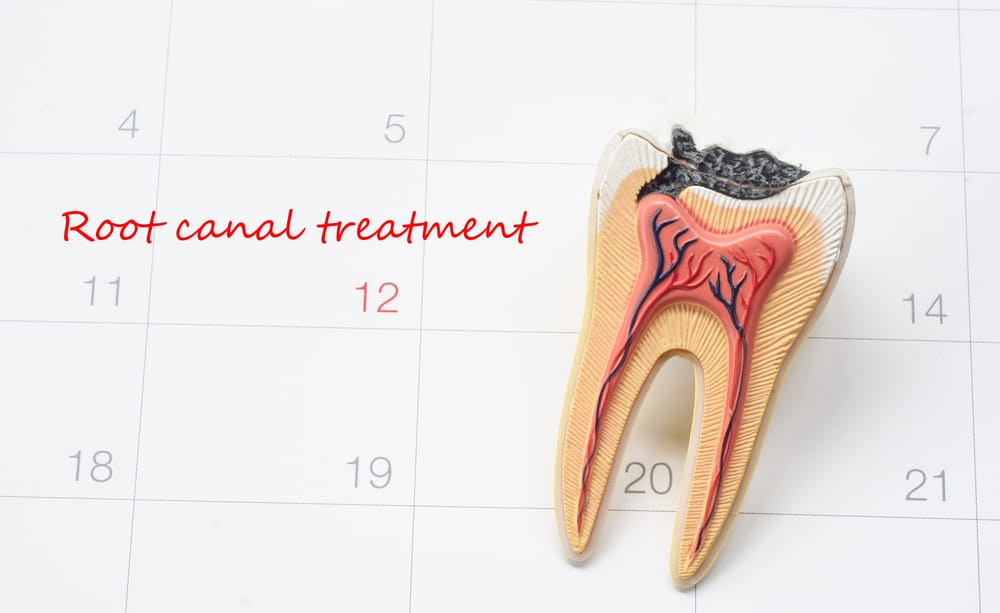Are you experiencing severe pain in your teeth while eating or drinking? Does your tooth feel sensitive to hot or cold temperatures? If you are experiencing these symptoms, you might need a root canal. A root canal is a dental procedure that can save an infected or damaged tooth from extraction. In this blog, we will help you understand all there is to know about non-surgical root canals. From understanding what causes pulp damage to recognizing the symptoms of damaged pulp and getting diagnosed with a root canal, we will cover it all. We will also explain the non-surgical root canal procedure and compare it with surgical procedures to help you decide which is correct. Lastly, we will guide you through finding the right endodontist for your treatment and what to expect post-treatment.
Understanding Root Canal
Root canal therapy is a commonly performed dental procedure. It involves the removal of diseased pulp from a tooth, helping to save natural teeth from extraction. Local anesthesia is used during the procedure to ensure a pain-free experience for the patient. Root canal therapy has a high success rate in treating infected or injured pulp. By removing the infected tissue, the root canal can eliminate the source of pain and restore the tooth’s functionality. It is an effective non-surgical treatment option that allows patients to keep their natural teeth intact.
Causes of Pulp Damage
Untreated cavities can damage the pulp, the innermost part of the tooth. Dental trauma, such as a cracked tooth, can also damage pulp. Another common cause of pulp damage is a bacterial infection, which can cause inflammation and harm the pulp. Additionally, extensive dental procedures can inadvertently damage the pulp. The severity or extent of the damage determines the type of root canal treatment that will be required. It’s essential to address pulp damage promptly to prevent further complications and to preserve the tooth.
Recognizing Symptoms of Damaged Pulp
Recognizing Symptoms of Damaged Pulp can help identify if a non-surgical root canal is needed. Tooth pain when biting or applying pressure is a standard indicator of pulp damage. Sensitivity to hot or cold temperatures can also be a sign. Swelling or tenderness in the gums may indicate pulp infection. Discoloration of the tooth could be a symptom as well. Persistent bad breath or a foul taste in the mouth can be caused by infected pulp. If you experience these symptoms, seeking dental attention is essential to prevent further complications.
The Non-Surgical Root Canal Procedure Explained
The non-surgical root canal procedure is a treatment that involves the removal of infected tissue from the root canal system. Sodium hypochlorite cleans, shapes, and disinfects the root canal. Sometimes, calcium hydroxide may be used as a temporary filling material. Once the root canal is prepared, it is sealed with a permanent filling. To restore the natural form of the tooth, a temporary crown may be placed, followed by a permanent crown. This procedure effectively treats infected root canals without the need for endodontic surgery. It helps eliminate the source of infection and promotes healing of the periapical tissues.
Comparing Non-Surgical and Surgical Root Canal Procedures
Non-surgical root canal therapy is often the initial treatment option for dental issues. This procedure involves removing the infected tissue from the root canal system and cleaning, shaping, and disinfecting it using sodium hypochlorite. Temporary filling material like calcium hydroxide may be used before sealing the root canal with a permanent filling. In most cases, non-surgical treatment has a high success rate and preserves the natural tooth. However, surgical intervention may be necessary in some situations, such as when non-surgical treatment fails or in complex cases. Surgical root canal therapy, like endodontic surgery, may involve tooth extraction and is reserved for more severe cases. Ultimately, the type of root canal treatment depends on the extent of damage and the success rate of each procedure.
What to Expect Post Non-Surgical Root Canal Treatment
After a non-surgical root canal treatment, you can expect the pain and discomfort to subside gradually. Temporary tooth sensitivity is common but should resolve over time. If necessary, follow your dentist’s instructions for pain management. It is crucial to maintain good oral hygiene to prevent further infection or complications. Make sure to attend follow-up appointments to monitor the success of the treatment. By doing so, you can ensure that the non-surgical endodontic treatment effectively addresses any issues with the tooth’s pulp. Remember to continue routine filling and dental care to preserve the health of your teeth.
How Effective is Non-Surgical Root Canal Treatment?
Non-surgical root canal treatment is highly effective in saving natural teeth. It is the most common procedure to treat diseased pulp and preserve dental health. By removing infected tissue and sealing the root canal, further infection can be prevented. A treated tooth can function like a natural tooth for many years with proper care.
Conclusion
In conclusion, non-surgical root canal treatment offers a safe and effective solution for addressing pulp damage and saving your natural tooth. It eliminates the need for invasive surgical procedures and provides long-term relief from pain and discomfort. However, consulting with a skilled and experienced endodontist who can accurately diagnose your condition and determine whether non-surgical root canal treatment is the right option for you is crucial. Remember to follow post-treatment care instructions provided by your dentist to ensure proper healing and minimize potential complications. With the advancements in modern dentistry, non-surgical root canal treatment has become a reliable and successful procedure that can restore your dental health and preserve your smile.


Recent Comments